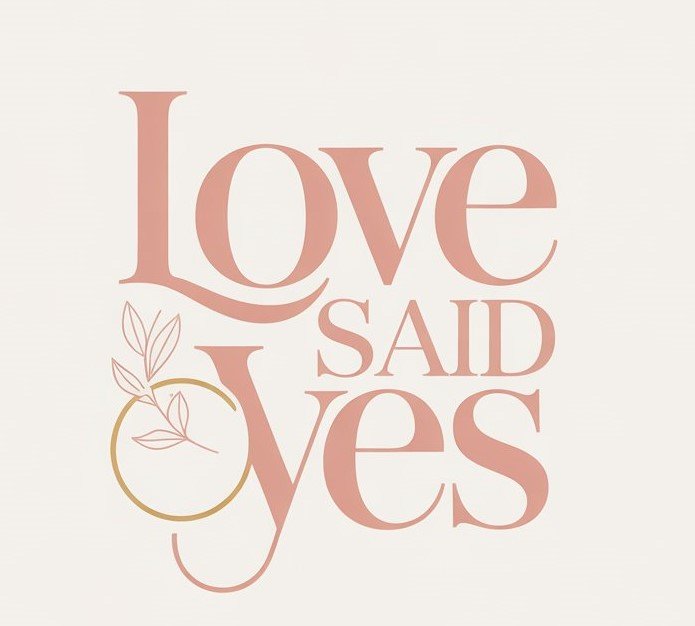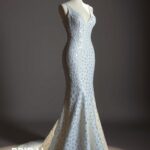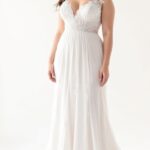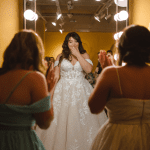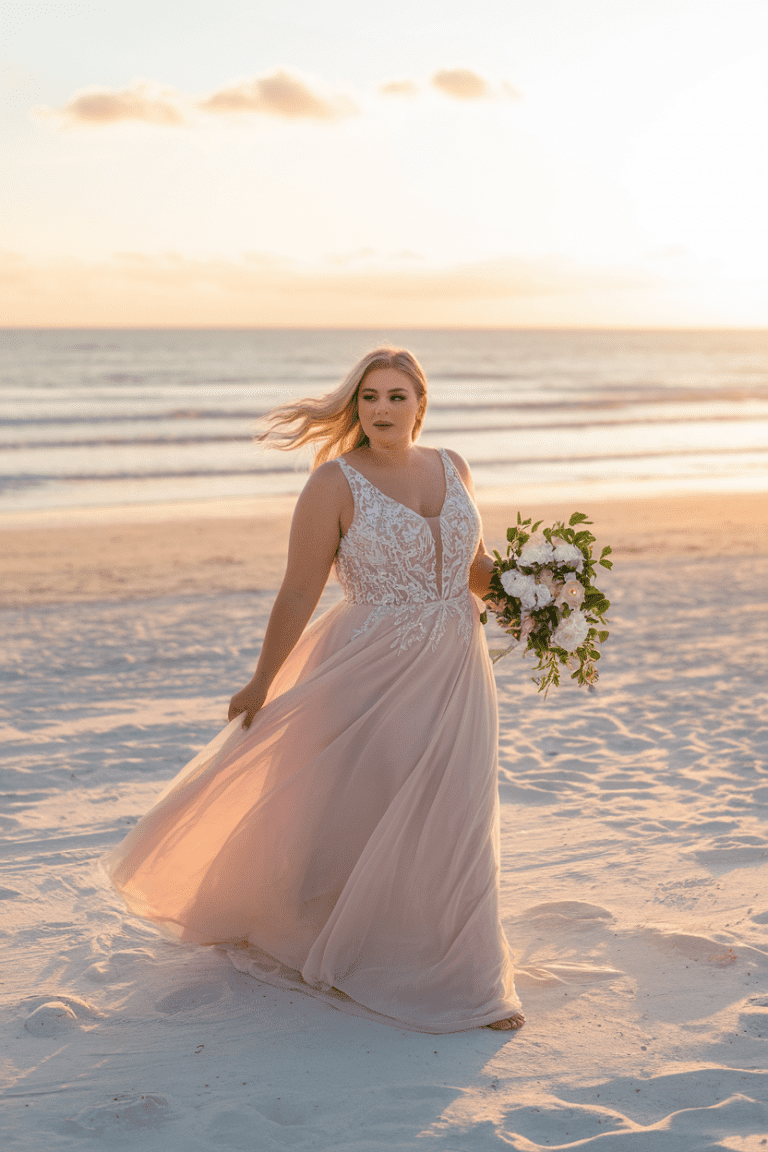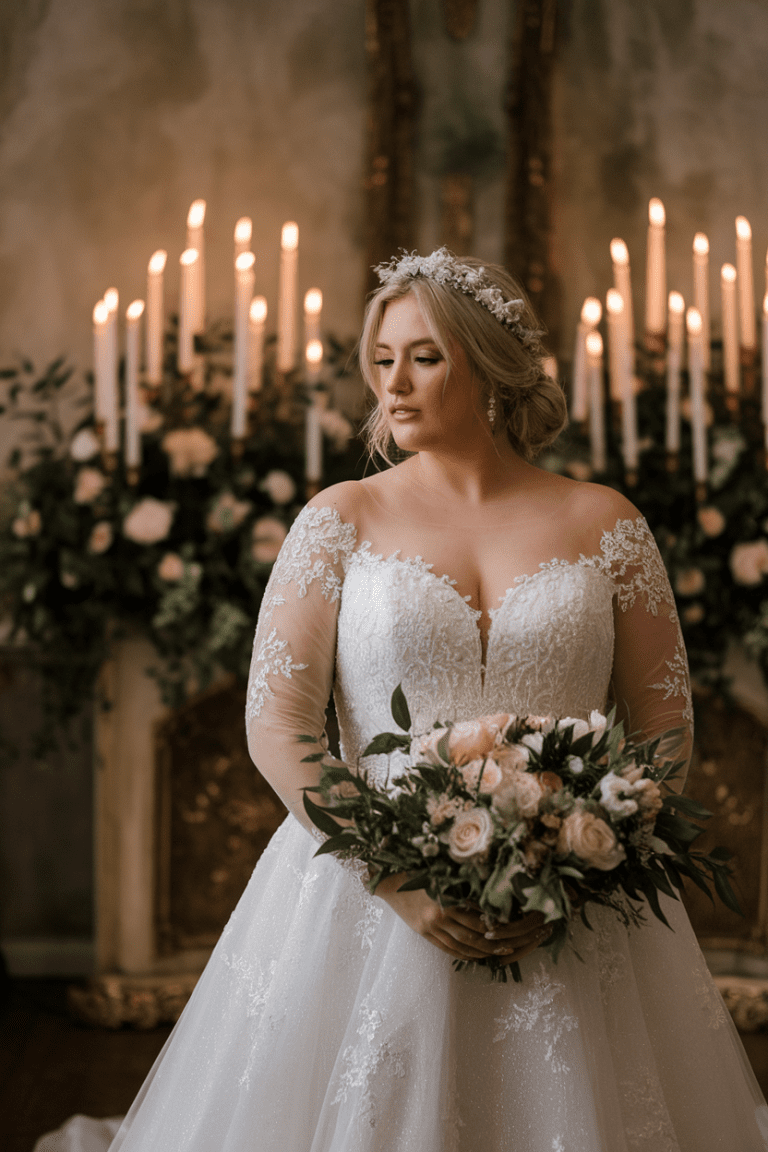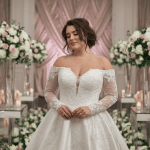Shopping for a wedding dress is one of the most emotional and exciting experiences of a bride’s journey. But what many brides discover quickly is that the dress purchased off the rack is rarely the one that walks down the aisle. Alterations transform a beautiful gown into one that feels truly personal. For curvy brides, this process is especially important, as tailoring ensures the dress not only looks stunning but also offers the support, comfort, and confidence that every bride deserves.
Bridal alterations are not about changing a bride’s body to fit a dress—they are about sculpting the dress to fit the bride. With the right seamstress, a gown can be adjusted in subtle but powerful ways that enhance curves, improve movement, and highlight personal style. Understanding how the process works helps brides plan ahead, avoid surprises, and step into their wedding day with total confidence.
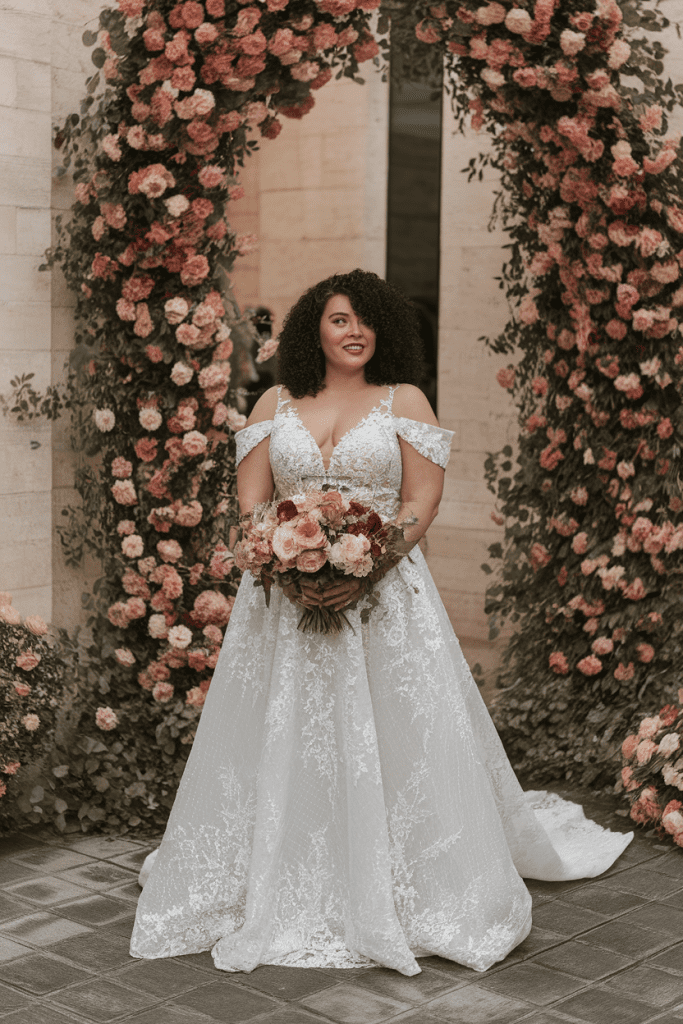
Understanding the Timeline
One of the most common surprises brides face is how long alterations take. Wedding dress tailoring is not a quick process; it usually requires multiple appointments over several months. For plus size brides, it is especially important to start early, as some gowns may require additional adjustments for structure and support. Brides should ideally plan for their first fitting at least three months before the wedding. This allows enough time for three to four rounds of alterations, ensuring every detail is perfected. Last-minute adjustments are possible but often stressful and costly. Seamstresses also get booked quickly during wedding season, so securing a spot early is crucial. By understanding the timeline, brides can budget both their time and money effectively. The result is a dress that not only looks polished but also feels like it was made just for them.
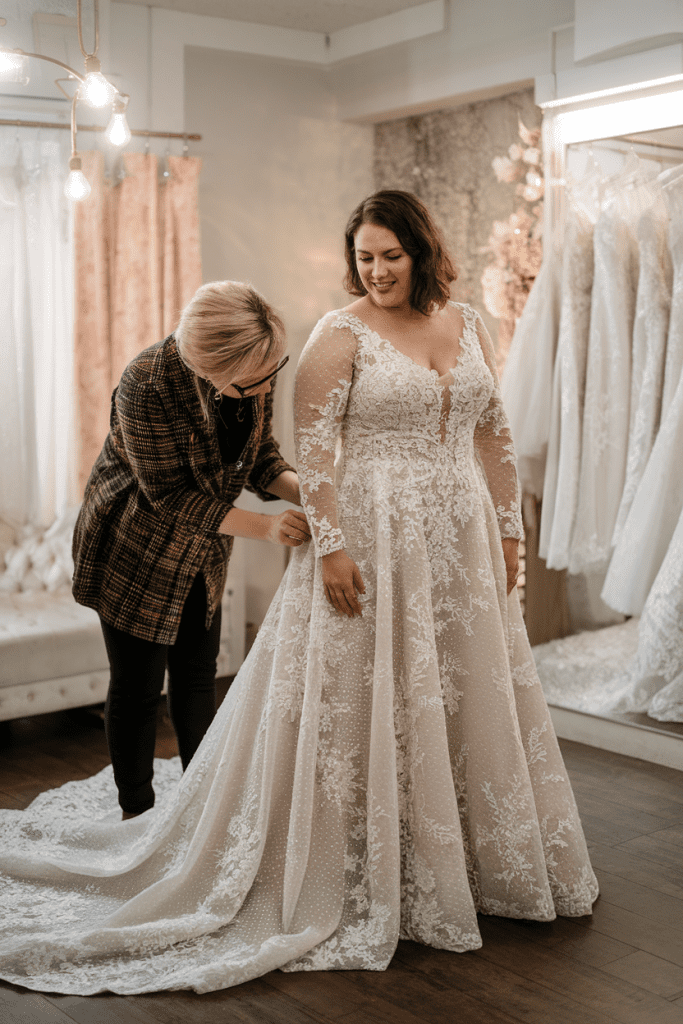
Common Alterations for Plus Size Brides
Every wedding gown is unique, but certain alterations are especially common for curvy brides. Adjusting the bust is often a priority, as dresses rarely fit perfectly in this area without some tailoring. Adding or repositioning boning inside the bodice can offer much-needed support, while altering straps or sleeves ensures comfort and security. Hemming the gown to the right length is another key step, particularly if the dress has multiple layers or intricate lace. Many plus size brides also benefit from taking in the waist slightly to accentuate curves while ensuring the skirt drapes beautifully. For gowns with zippers, some brides request the addition of a corset back, which allows more flexibility in fit. These alterations are not about changing body shape but about enhancing comfort and highlighting natural beauty. A skilled seamstress knows how to make subtle changes that transform the entire look of a gown.
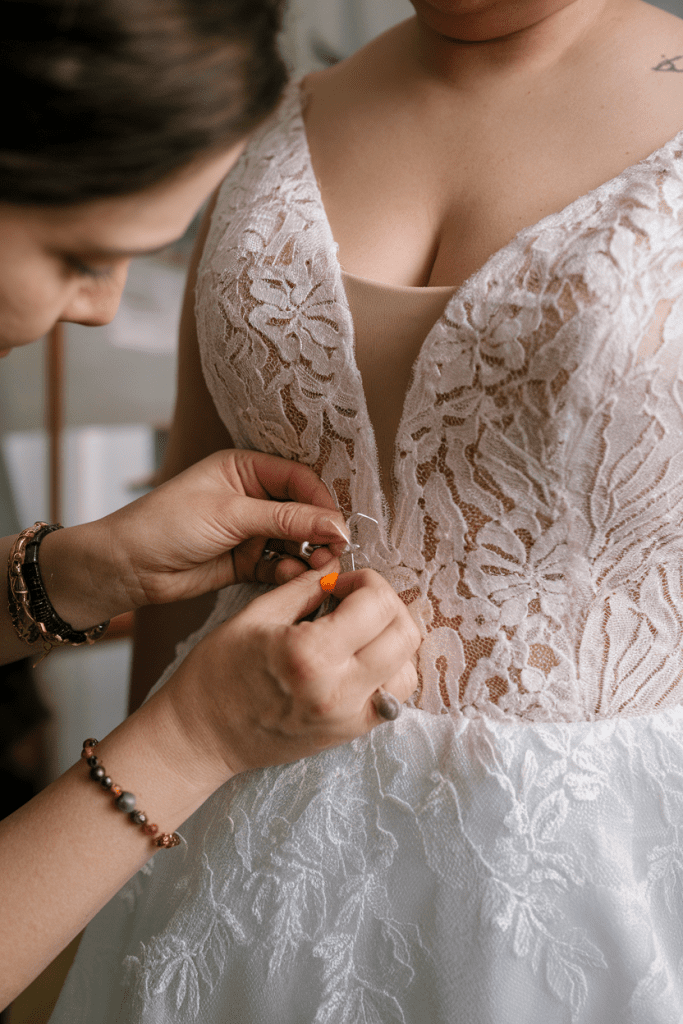
Custom Fit Options
For brides who want something beyond basic tailoring, custom fit options can create a truly one-of-a-kind gown. Adding sleeves is a popular request, offering both coverage and elegance. Brides may also choose to raise or lower necklines, depending on their comfort level. Incorporating lace appliqués or beading is another way to personalize a gown and make it unique. Some plus size brides opt for extra panels of fabric to provide more ease of movement, especially in fitted silhouettes. Built-in bras or additional bust support can be added to replace the need for complicated undergarments. For those who want maximum comfort, seamstresses can even redesign the lining with softer fabrics. Each of these adjustments makes the dress more reflective of the bride’s personality and preferences. Customization ensures that no two gowns are ever truly the same, and the result is a dress that feels as individual as the love story it represents.
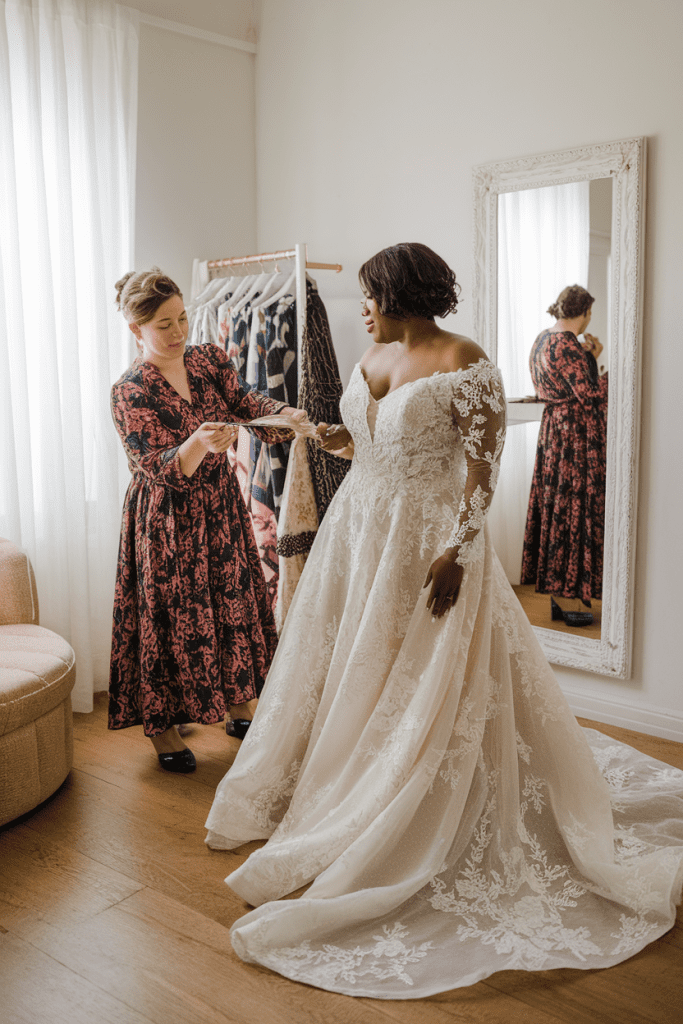
The Role of a Skilled Seamstress
The difference between a good dress and a perfect dress often comes down to the skill of the seamstress. For plus size brides, finding an experienced professional is especially important. A skilled seamstress understands how to work with different fabrics, from delicate chiffon to structured mikado, and how each responds to alterations. They also know how to balance aesthetic goals with practical needs, ensuring the gown looks beautiful while remaining comfortable to wear for hours. Brides should feel comfortable asking questions during fittings and voicing any concerns about fit or movement. A true professional listens carefully and makes thoughtful recommendations. Building a good relationship with the seamstress allows for open communication and trust throughout the process. The seamstress ultimately becomes a partner in the wedding journey, ensuring the bride feels confident and radiant on her big day.
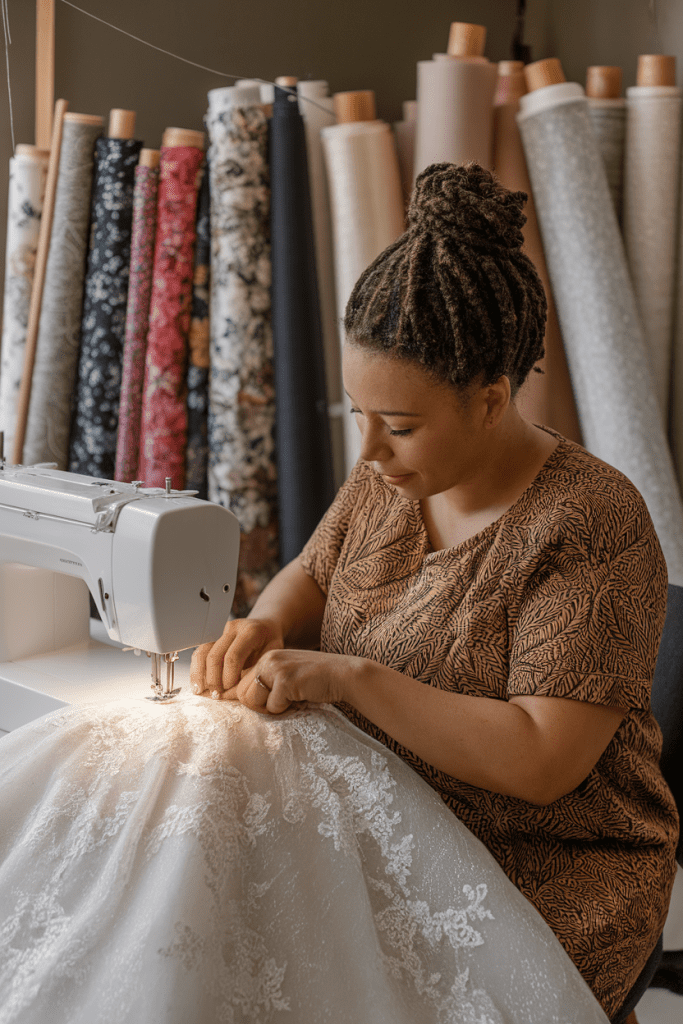
Emotional Benefits of Alterations
Alterations are not just about stitches and seams—they are about empowerment. Many curvy brides step into their first fitting with anxiety, worrying that no gown will ever feel right. But with each round of adjustments, they begin to see the transformation, not just of the dress but of their confidence. A gown that fits perfectly allows brides to stand taller, smile wider, and move freely. The emotional shift is profound; instead of worrying about tugging at fabric or feeling uncomfortable, brides can focus on the joy of the day. Alterations remind brides that the gown should adapt to them, not the other way around. By the final fitting, most brides describe the experience as liberating. The emotional benefit of feeling secure, beautiful, and seen cannot be overstated. A well-fitted gown is not just clothing—it is a statement of self-love and celebration.
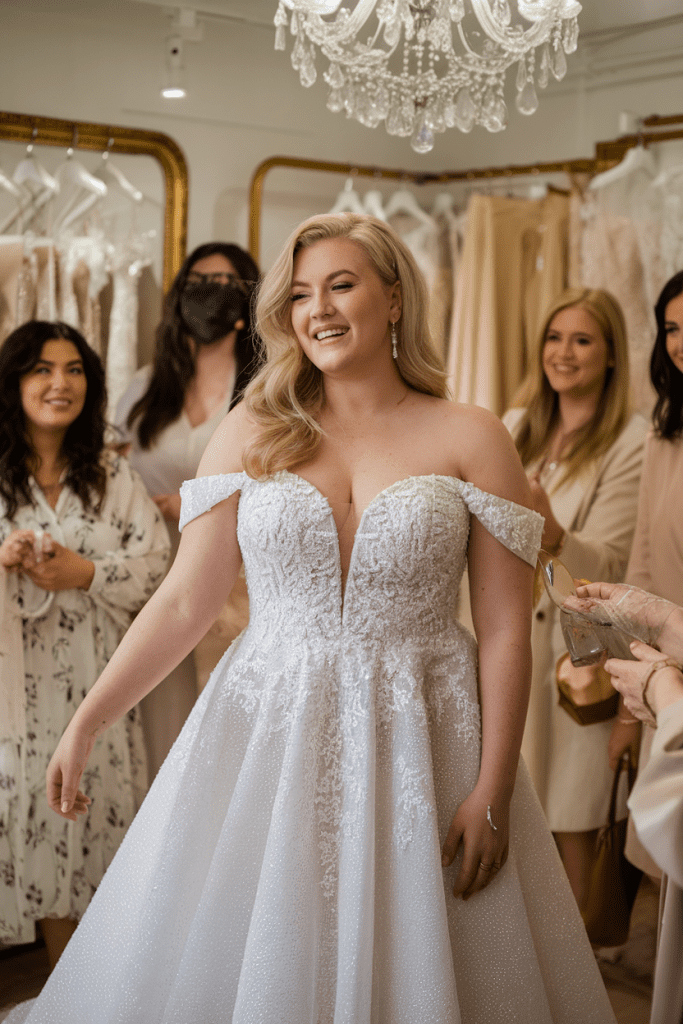
Final Thoughts
For curvy brides, alterations and custom fit are the key to unlocking the full potential of a wedding dress. From understanding timelines and common adjustments to exploring customization and partnering with skilled seamstresses, every step is about making the gown feel as personal as the love story it represents. Alterations ensure that brides walk down the aisle not only in style but with comfort and confidence. The journey may take time, patience, and investment, but the result is always worth it. In the end, the perfect fit is not just about how the gown looks—it is about how it makes a bride feel.
